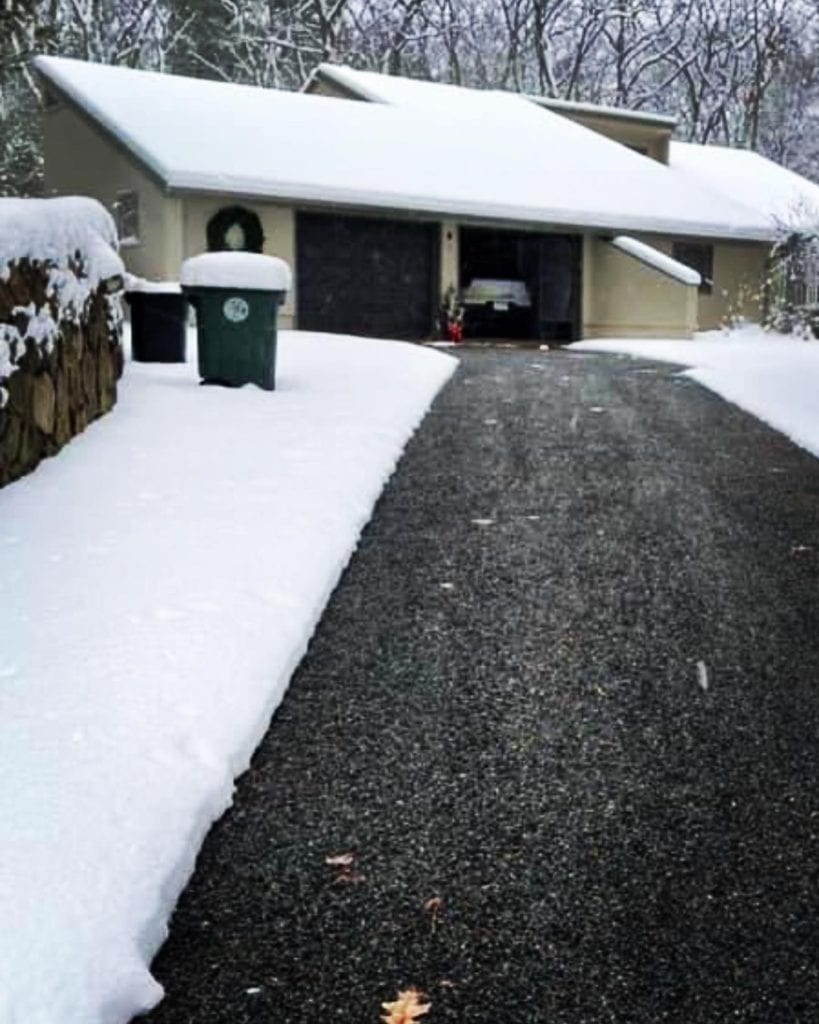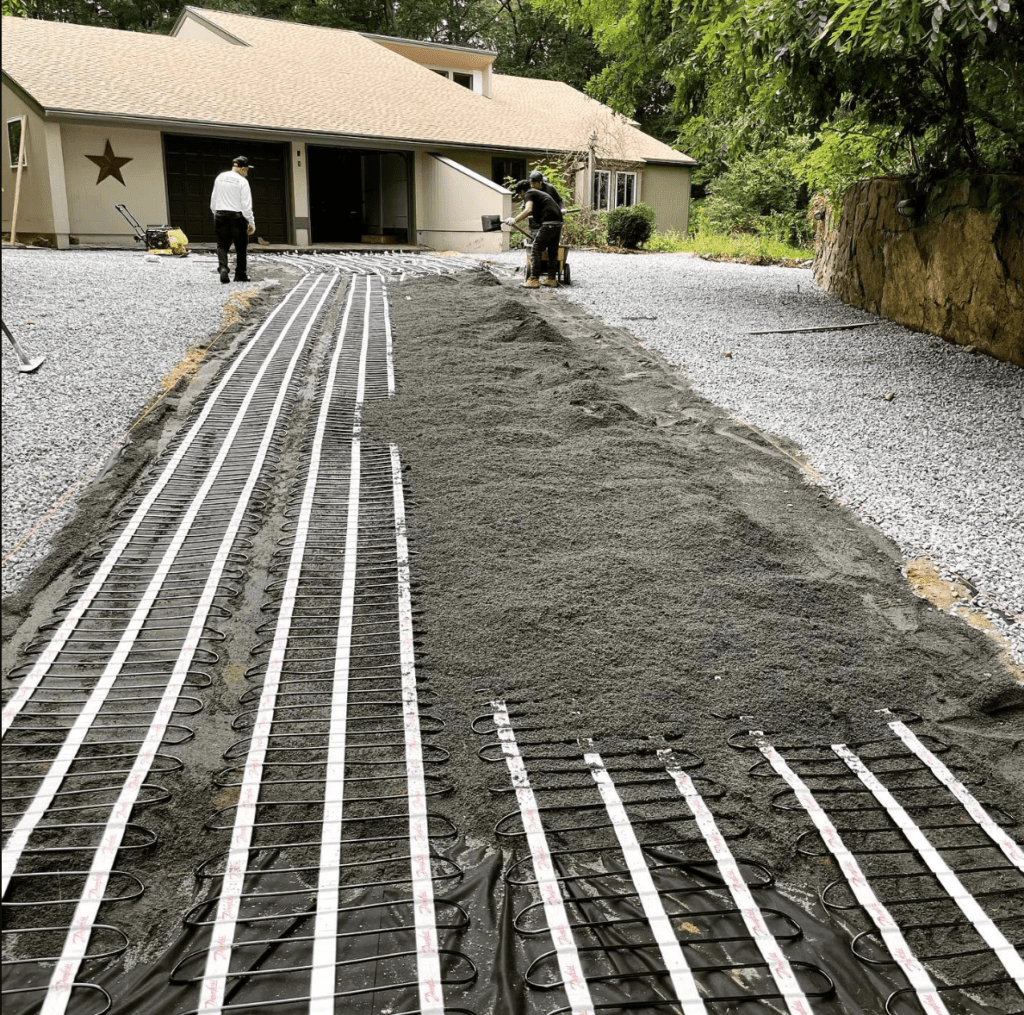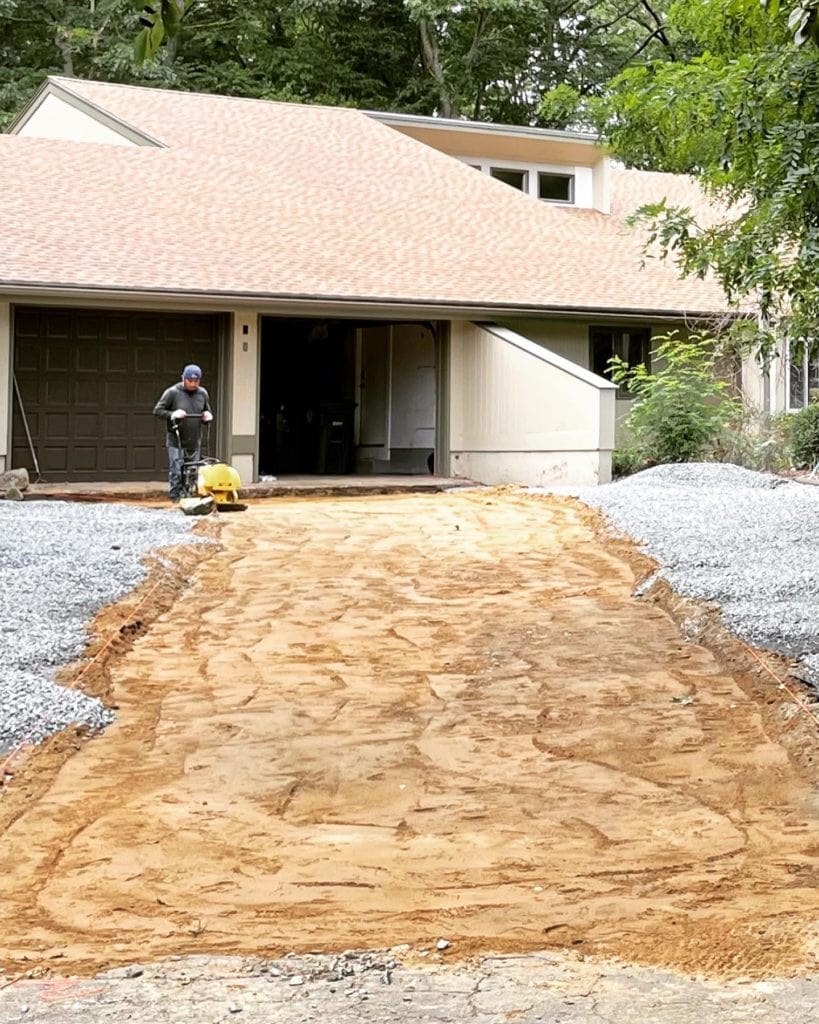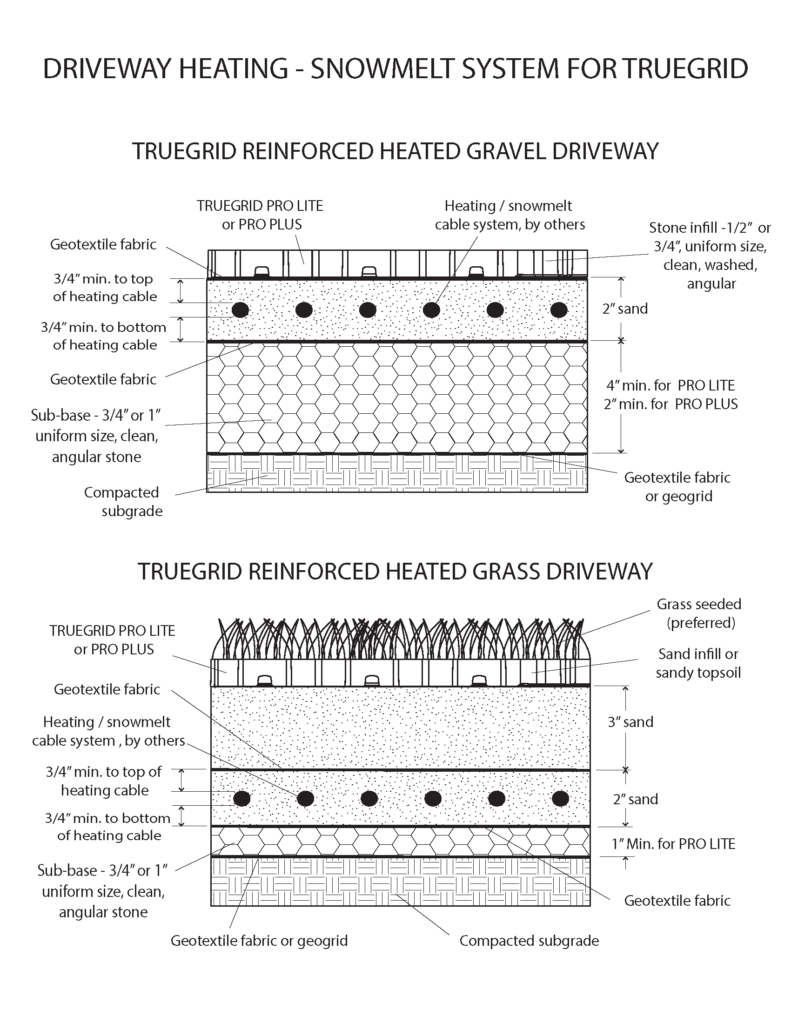Ice and snow in your driveway can be a huge hassle during the winter months. Not only that, but they can pose a risk to your safety as well. Many people have taken a hard fall after slipping on some ice in their driveway, or suffered a heart attack while trying to shovel mounds of snow.
Even setting aside the health risks, having to shovel a lot of snow or use a snow blower just isn’t viable for some people. That’s where heated driveways come in. Heated driveways use different methods to heat the surface and melt snow and ice before they can build up.

Most heated driveways are built from concrete or asphalt, but you can, in fact, install a heated driveway made from permeable pavers. Permeable pavers might not seem like they’d work well with a heating system at first glance, but this couldn’t be further from the truth. In case you want a heated permeable driveway, let’s take a look at how to install and operate them.
Types of Heated Permeable Driveways
There are multiple types of driveway heating methods to choose for a heated permeable driveway. Electric heating methods utilize heating cables in the bedding layer of the driveway that are heated by electricity which heats the surface of the driveway pavers, thus melting the snow and ice on top of it. The cables must be connected to a power source, like the central power box of the home, for instance.
Another type of heated permeable driveway system is hydronic heating. Instead of electricity, this method uses heated water and antifreeze pumped through tubing beneath the driveway’s surface. The heated solution warms the tubes and melts the snow and ice on the surface of the driveway as a result.
Both of these heating methods work far better with permeable driveways than they do with impermeable ones. This is because the melted snow and ice simply drains right through these types of driveways because it has a natural outlet to escape through.
With solid concrete and asphalt driveways, the melted water tends to pool around the edges if you don’t have some type of additional drainage system installed along the sides of your driveway. For this reason, impermeable heated driveways tend to work best when sloped downwards, away from the home and into the street.
Both heating methods use sensors to detect the presence of precipitation and turn the heat on. If left on all the time, these sensors can add to your energy bill quite a bit, which is why many homeowners opt to manually turn the heating systems on when the weather calls for it.
Heated Paver Driveway Considerations
There are multiple things you want to consider before installing a heated permeable paver driveway. One of these is which heat source you prefer. Electric heating systems can last longer than the tubing in a hydronic system, but the cost can be higher.

If maintenance is a concern and you want a heating system that’s going to last for the long haul, we recommend using an electric heating system because of the regular maintenance that hydronic tubing requires.
How to Install a Permeable Driveway with Heat
Installing a permeable driveway with a heating system is just about as easy as installing one without. There’s just one extra step you have to take during the installation and it doesn’t typically take very long to complete.
To start the installation of a heated permeable paver driveway, the area must be excavated to a depth of about 8 inches. After, a piece of fabric will be laid at the bottom of the cross section to provide separation and optimal drainage. Next, the base aggregate will be laid with washed angular stone and compacted to leave room for a layer of sand to level out the top.
The heating system will be placed in the sand and connected to its fuel source. Then, the interlocking pavers such as TRUEGRID PRO LITE or TRUEGRID PRO PLUS will be snapped into place over the top of the sand as easily as you would with LEGO blocks.

Once this is complete, more gravel will be poured into the cells of the empty pavers and compacted into them with a vehicle or heavy roller. Once the surface gravel has been compacted into the pavers this completes the installation of your new heated permeable paver driveway.

TRUEGRID Makes the Best Permeable Pavers for Heated Driveways
When it comes to choosing the pavers for your new heated driveway, you can’t go wrong with TRUEGRID. Not only do these pavers have a lifespan of up to 60 years DUE to their durable composition, they’re made from 100%-recycled plastic. Impervious to almost all deteriorating factors, TRUEGRID permeable pavers require almost zero maintenance throughout their lifetime.
If you want to build the most eco-friendly, highest quality, durable, stylish, and low-maintenance heated driveway, don’t hesitate to pick up the phone and call TRUEGRID today for a free quote.



